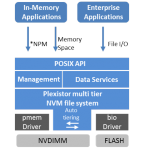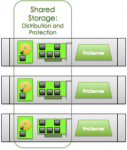I’m really excited about the prospects of memory-addressable flash. Moving flash closer to the CPU and addressing it as memory rather than block storage brings tremendous performance benefits, and is a once-in-a-generation radical change to system architecture. But questions remain as to how it can be integrated with today’s applications. Now Plexistor is here with a promising solution: Their “Software-Defined Memory” concept is a generic filesystem for storage, from NVDIMM to NVMe to SSD.
PernixData
TECHunplugged Austin is One Packed Event
This week I’m headed to Austin for two events: Tech Field Day 10, which I run, and a really special conference, TECHunplugged. I spoke at TECHunplugged London back in April and loved the experience. Now it’s coming to the USA for the first time, and the agenda is packed with great content. I highly recommend attending these events!
The Rack Endgame: A New Storage Architecture For the Data Center
Top-of-rack flash and bottom-of-rack disk makes a ton of sense in a world of virtualized, distributed storage. It fits with enterprise paradigms yet delivers real architectural change that could “move the needle” in a way that no centralized shared storage system ever will. SAN and NAS aren’t going away immediately, but this new storage architecture will be an attractive next-generation direction!
Virtualized and Distributed Storage: This Time For Sure!
We were never able to achieve storage virtualization in mainstream enterprise IT because we lacked the ability to identify and move data non-disruptively. This has been solved by caching and distributed storage solutions, and it’s only a matter of time before the legacy need for centralized storage falls away.
Is Storage the Killer App for Software-Defined Networking?
Software Defined Networking (SDN) has always looked a bit like a solution in search of a problem, at least in the enterprise data center. But there are lots of potential applications that need a dynamic and scalable network. In my mind, storage is chief among these, since scalability and flexibility has always been extremely difficult to achieve.



